
International Journal of Self-Propagating High-Temperature Synthesis
Scope & Guideline
Elevating Knowledge in High-Temperature Synthesis.
Introduction
Aims and Scopes
- Development of SHS Techniques:
Research articles often explore innovative SHS methods and variations, including solution combustion synthesis, mechanochemical activation, and the influence of different fuels and reactant ratios on the synthesis process. - Characterization of Advanced Materials:
The journal emphasizes the characterization of materials produced via SHS, including structural, microstructural, thermal, and magnetic properties, to understand their performance in various applications. - Application of SHS Products:
A significant focus is placed on the practical applications of SHS-synthesized materials, spanning areas such as catalysis, thermoelectric materials, magnetic materials, and ultra-high-temperature ceramics. - Exploration of Combustion Dynamics:
The journal includes studies on the dynamics of combustion processes during SHS, including reaction kinetics, front propagation, and the effects of gas flow and particle size on synthesis outcomes. - Environmental and Energy Applications:
Research on the use of SHS methods for environmentally friendly materials, such as catalysts for waste conversion and energy-efficient processes, is also a core area of interest.
Trending and Emerging
- Nanostructured Materials:
There is an increasing focus on the synthesis and application of nanostructured materials, particularly in catalysis and electronic applications, as researchers seek to exploit their unique properties. - High-Entropy Alloys and Composites:
Recent publications highlight the development of high-entropy alloys and composites through SHS, emphasizing their potential in high-performance applications due to their unique mechanical and thermal properties. - Catalyst Development:
A significant trend is the exploration of SHS methods for developing catalysts, particularly for energy conversion and environmental applications, underscoring the importance of sustainable technologies. - Thermoelectric Materials:
The journal has increasingly featured research on thermoelectric materials synthesized via SHS, reflecting the growing demand for energy-efficient materials in power generation and waste heat recovery. - Multi-Functional Materials:
Emerging research is focusing on the synthesis of multifunctional materials that combine several desirable properties (e.g., magnetic, thermal, and catalytic) for advanced applications in various fields.
Declining or Waning
- Traditional SHS Methods:
There has been a noticeable decrease in publications focusing solely on traditional SHS methods without modifications or enhancements, as researchers increasingly explore novel synthesis techniques and hybrid approaches. - Basic Theoretical Studies:
Theoretical studies that do not connect to practical applications or experimental validation are becoming less prevalent, reflecting a trend towards more application-driven research. - Exploration of Low-Temperature Processes:
Research on low-temperature synthesis processes appears to be waning, possibly as higher temperature processes demonstrate superior properties and performance characteristics for advanced materials.
Similar Journals

Materials Futures
Driving discoveries that redefine materials innovation.Materials Futures, an esteemed journal published by IOP Publishing Ltd, stands out as a pivotal resource in the field of Materials Science, with a particular emphasis on Biomaterials. Launched in 2022 and operating under an Open Access model, the journal aims to foster accessibility and rapid dissemination of pioneering research, thus catering to the diverse needs of researchers, professionals, and students globally. With a commendable Scopus Rank of #46 out of 137 in its category, placing it in the 66th percentile, and recognized as a Q1 journal as of 2023, Materials Futures provides a vital platform for cutting-edge studies and innovations that address contemporary challenges in materials science. As the journal evolves through its convergence period from 2022 to 2024, it continues to attract high-quality submissions aimed at advancing knowledge and applications within the biomaterials sector, reflecting its commitment to contributing vital insights and fostering collaboration across disciplines. Explore Materials Futures for your research endeavors and join a community dedicated to shaping the future of materials.
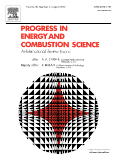
PROGRESS IN ENERGY AND COMBUSTION SCIENCE
Driving progress in energy and fuel technology.PROGRESS IN ENERGY AND COMBUSTION SCIENCE, published by PERGAMON-ELSEVIER SCIENCE LTD, stands as a premier journal in the realms of energy engineering and fuel technology, with an impressive impact factor and recognition across multiple scientific disciplinary matrices. Since its inception in 1975 and continuing through 2024, this esteemed publication has contributed significantly to the advancement of knowledge in energy resources, combustion processes, and their applications in modern technology. With a robust ranking of Q1 in key categories such as Chemical Engineering, Energy Engineering and Power Technology, and Fuel Technology, the journal consistently showcases high-quality research that influences both academia and industry. Researchers, professionals, and students benefit from its rigorous peer-reviewed articles, which foster a deeper understanding of energy-related challenges and innovations. Although it is not an Open Access outlet, its relevance and contribution to the scientific community are undeniable, making it a vital resource for anyone engaged in the pursuit of sustainable energy solutions.
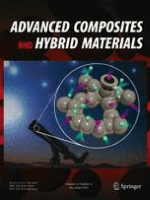
Advanced Composites and Hybrid Materials
Advancing Knowledge in Composite ApplicationsAdvanced Composites and Hybrid Materials, published by SPRINGER NATURE, is a premier journal dedicated to the field of materials science, with a keen focus on innovative composite materials and their applications. With its ISSN 2522-0128 and E-ISSN 2522-0136, the journal has established itself as a cornerstone for researchers and professionals in materials chemistry, ceramics, and polymers, achieving an impressive Q1 ranking across multiple categories in 2023. In particular, it ranks #3 out of 161 in Polymers and Plastics and #4 out of 127 in Ceramics and Composites, highlighting its influential presence within the academic community. The journal aims to provide a cutting-edge platform for the dissemination of groundbreaking research and developments from 2018 to 2024, facilitating knowledge sharing and collaboration among experts. While currently adopting a traditional access model, the significance and impact of research published in this journal cannot be overstated, making it an essential resource for anyone interested in advancing the field of composite materials.

RUSSIAN CHEMICAL REVIEWS
Shaping the Future of Chemical ResearchRUSSIAN CHEMICAL REVIEWS, published by the esteemed ND Zelinsky Institute of Organic Chemistry, RAS, stands as a prominent platform for disseminating high-quality research in the diverse field of chemistry. With an ISSN of 0036-021X and an E-ISSN of 1468-4837, this journal has earned its place in the Q1 quartile of Chemistry (miscellaneous) for 2023, reflecting its outstanding impact and rigorous peer-review process. The journal encompasses a wide array of topics within chemistry, providing critical reviews that advance understanding and foster collaboration among researchers, professionals, and students globally. With its consistent publication since 1970, RUSSIAN CHEMICAL REVIEWS not only serves as a valuable resource for the latest advancements in the field but also plays a crucial role in shaping future research directions. The journal is based in the Russian Federation, with its office located at 47 Leninsky Pr, Moscow 119991, RUSSIA. As an essential reference for those in the chemical sciences, it provides an ideal avenue for authors looking to publish impactful reviews that contribute to the broader scientific community.

JOURNAL OF ELECTROCERAMICS
Fostering Interdisciplinary Insights in Electroceramic ResearchJOURNAL OF ELECTROCERAMICS, published by SPRINGER in the Netherlands, serves as a pivotal platform for advancing the field of electroceramics since its inception in 1997. With a keen focus on innovative materials and applications, this journal covers diverse areas encompassing ceramics and composites, condensed matter physics, and electronic materials, significantly contributing to interdisciplinary research. Although currently not an Open Access publication, the journal's engagement in rigorous peer review ensures the dissemination of high-quality research, supported by its respectable Q3 ranking in several relevant categories in 2023. Researchers and professionals will find value in its comprehensive scope, showcasing cutting-edge developments that shape the future of engineering and materials science. The JOURNAL OF ELECTROCERAMICS continues to play a crucial role in bridging theoretical discoveries with practical applications, making it an indispensable resource for students, scholars, and industry experts alike.

Solids
Advancing Knowledge in Materials and ApplicationsSolids is a distinguished peer-reviewed journal published by MDPI, dedicated to the comprehensive exploration of the properties, applications, and advancements in solid materials. Starting its journey in 2020, this Open Access journal provides a dynamic platform for researchers and professionals in the fields of physics, astronomy, materials science, and chemistry, enabling them to disseminate their findings to a global audience without barriers. With an emerging presence in the academic landscape, Solids has established a reputation reflected in its Scopus rankings, including a commendable position of #28 out of 81 in Physics and Astronomy and #83 out of 196 in Materials Science, demonstrating its impact and relevance within these vibrant fields. The journal's objectives extend to fostering interdisciplinary discussions and collaboration, making it an essential resource for those seeking to advance their understanding of solid materials and their innovative applications. Researchers and students alike are encouraged to contribute to this essential dialogue, engaging with the latest research and insights in solid-state science from around the globe.

Reactions
Empowering Researchers with Open Access InsightsReactions is a dynamic open-access journal published by MDPI, dedicated to the advancement of research in the fields of Chemical Engineering and Chemistry. Launched in 2020, the journal aims to provide a platform for scientists and researchers to share their findings and innovations, facilitating the synthesis and dissemination of knowledge within the global academic community. With an impact factor that reflects its growing influence, Reactions ranks 47th in the Chemical Engineering category and 72nd in Chemistry on Scopus, placing it within the vibrant landscape of contemporary chemical research. Housed in the picturesque city of Basel, Switzerland, the journal is committed to open access, ensuring that its high-quality content is readily available to all. This commitment not only enhances visibility but also fosters collaboration among researchers, professionals, and students striving to push the boundaries of chemical sciences. As we look towards 2024 and beyond, Reactions continues to encourage submissions that explore groundbreaking methodologies, innovative applications, and transformative theoretical frameworks in chemistry and chemical engineering.
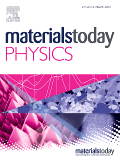
Materials Today Physics
Unveiling Innovations in Energy and Materials ResearchMaterials Today Physics, published by Elsevier, is a prestigious journal that focuses on the interdisciplinary field of materials science, physics, and energy innovations. With an impressive impact factor and a Q1 ranking in three categories—Energy (miscellaneous), Materials Science (miscellaneous), and Physics and Astronomy (miscellaneous)—it stands out as a key platform for disseminating high-quality research. The journal, which has been in circulation since 2017, provides a vital resource for academics and industry professionals alike, facilitating the exchange of knowledge and driving advancements in materials research. Available in both traditional and open-access formats, Materials Today Physics aims to publish cutting-edge research articles that push the boundaries of material properties and their applications, thereby contributing to the development of sustainable technologies and energy solutions. With a commitment to excellence, this journal offers a robust avenue for researchers to share their findings with a global audience, making it an essential tool for those engaged in the rapidly evolving fields of physics and materials science.
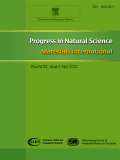
Progress in Natural Science-Materials International
Unveiling the Potential of Materials for TomorrowProgress in Natural Science-Materials International is a leading journal published by Elsevier Science Inc, dedicated to advancing the field of materials science through high-quality research and innovative studies. With an impressive impact factor and categorized in the top Q1 quartiles for both Materials Science and Multidisciplinary categories as of 2023, this journal is recognized for its significant contribution to the academic community. Operating as an Open Access publication since 2008, it ensures that cutting-edge research is readily available to a global audience, fostering collaboration and knowledge sharing among researchers, professionals, and students alike. Covering a broad spectrum of topics from the synthesis and characterization of materials to their application in various fields, Progress in Natural Science-Materials International serves as a vital platform for disseminating findings that propel the discipline forward. With its rich history dating back to its inception in 1996 and plans to continue until 2024, this journal is committed to providing a robust avenue for scholarly discourse and innovation.
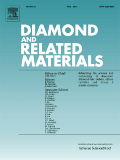
DIAMOND AND RELATED MATERIALS
Exploring the brilliance of diamond research.DIAMOND AND RELATED MATERIALS, published by Elsevier Science SA, serves as a premier international platform for the dissemination of high-quality research in the fields of materials science, electrical engineering, and chemistry, with a specialized focus on diamond and its related materials. With an ISSN of 0925-9635 and an E-ISSN of 1879-0062, this journal has established itself within the top quartiles, reflecting its influential contribution to the scientific community, particularly in the categories of Chemistry (miscellaneous) and Electrical Engineering, among others. The journal's wide scope encompasses both theoretical and applied aspects of diamond research, making it an essential resource for professionals and academics alike. The current rankings position it favorably within its respective disciplines, with a notable 79th percentile in General Physics and Astronomy and strong standings in related categories. Although it does not offer open access, researchers can stay informed of cutting-edge advancements and methodologies through its comprehensive articles and reviews, enriching the wider discourse in advanced materials research.